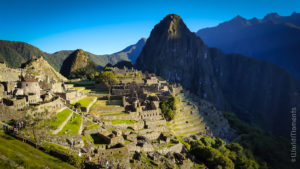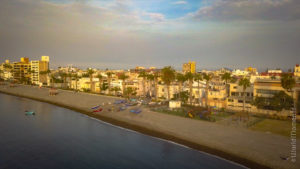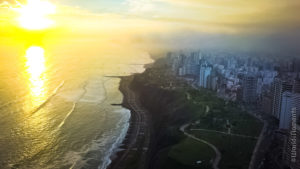Machu Picchu: Historical Sanctuary of Peru
Tourism at 2,400 meters of elevation, Machu Picchu is one of the seven modern wonders of the world, and with good reason! From the first moment that you embark on your journey to Machu Picchu, whether it be on a train, a bus, or hiking, you feel a kind of magical energy of the place that pushes you onward to learn more of the Incas. Such a majestic and incomparable vista will leave you breathless. So don’t hesitate to make your way here to have the experience of a lifetime.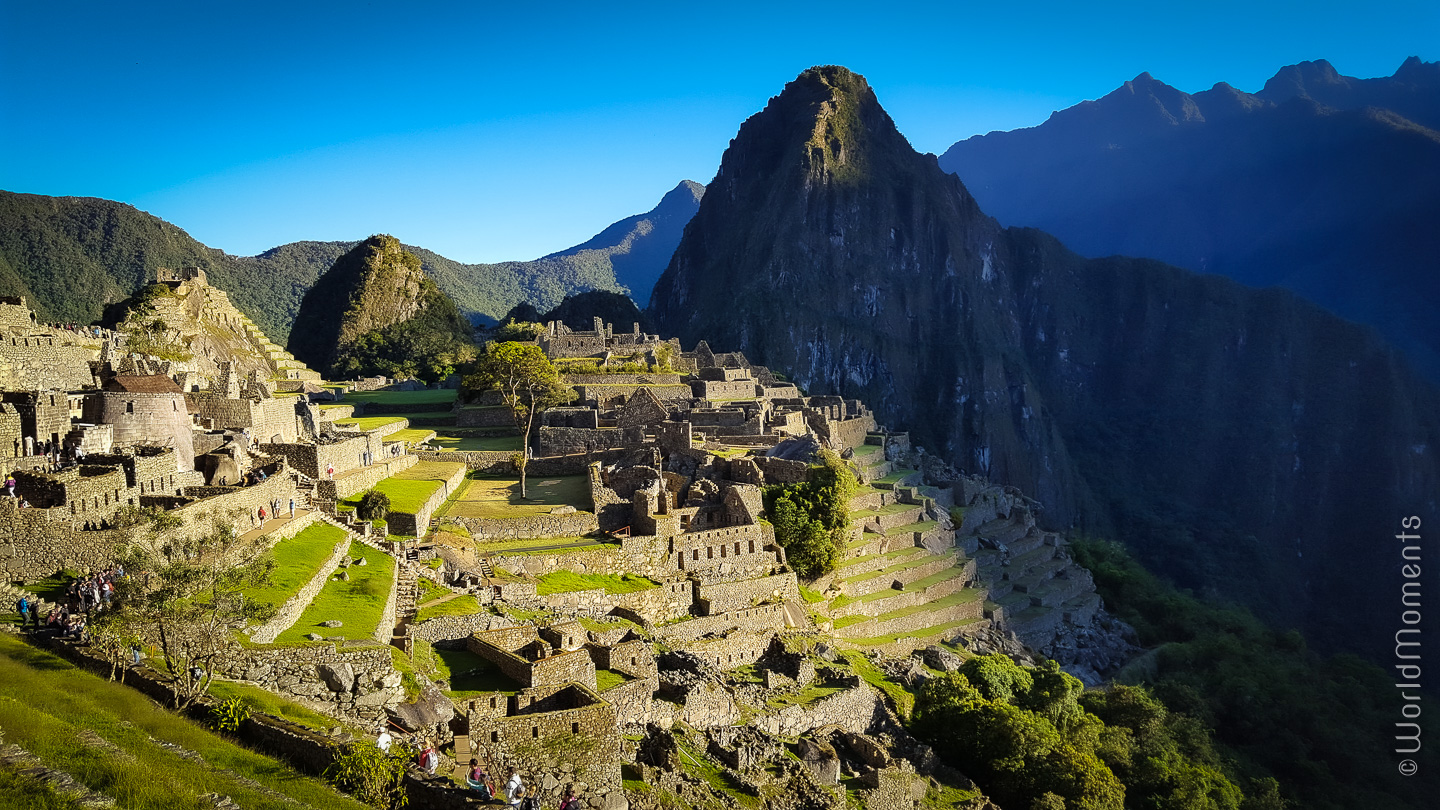
Machu Picchu is one of the seven modern wonders of the world
What’s the weather like in Machu Picchu?
Located at such high altitude in a subtropical zone, you’ll find that the weather in Machu Picchu is fresh but not cold, sometimes sunny and sometimes rainy. In the rainy season (between November and March), the temperature varies between 19 and 21 degrees Celsius. This might sounds warm (or cold!) to you – just be sure to remember to bring a rain-jacket, an umbrella and some rain-boots. The best time of day to visit Machu Picchu in the rainy season is between 10:00 and 11:00, since clouds can block the spectacular view at other times. The dry season is between April and October, and in this season the temperature is usually between 17 and 20 degrees Celsius. Sometimes, temperatures can drop to below 0 at night, so if you’re planning to visit this site later in the day, make sure that you bring warm clothing as well as sunscreen, sunglasses and a hat.
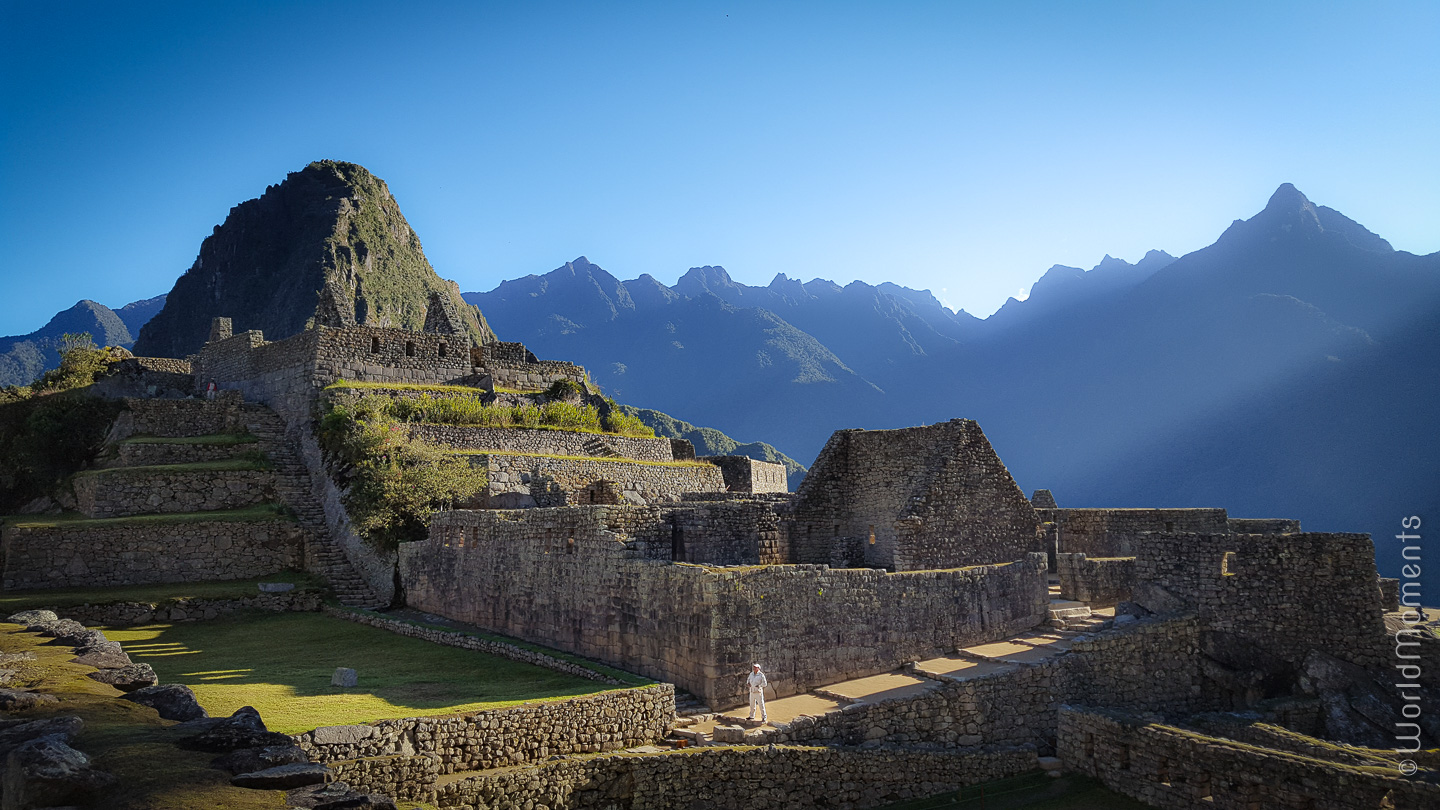
Located at such high altitude in a subtropical zone, you’ll find that the weather in Machu Picchu is fresh but not cold, sometimes sunny and sometimes rainy.
How to get to Machu Picchu
Taking the train from Cusco
Taking the train is the fastest and most comfortable way to get to Machu Picchu, but it’s also the most expensive. It’s quite easy: you can find the train at the Poroy station (30 minutes from Cusco in a taxi, about 7 USD) that you will take to Aguas Calientes, which takes about 4 hours (or one hour and 45 minutes from Ollantaytambo if you want to stop off here).
There are only two companies with which you can get to Aguas Calientes: Incarail and Perúrail, with the first being a little less expensive. Check into prices or reserve a ticket on these websites.
Once in Aguas Calientes, you can take the bus up to the sanctuary of Machu Picchu for about 24 USD round-trip, or if you would prefer to walk, you can make the trip in about one and a half hours. Guides are available for hire at the entrance gate of Machu Picchu.
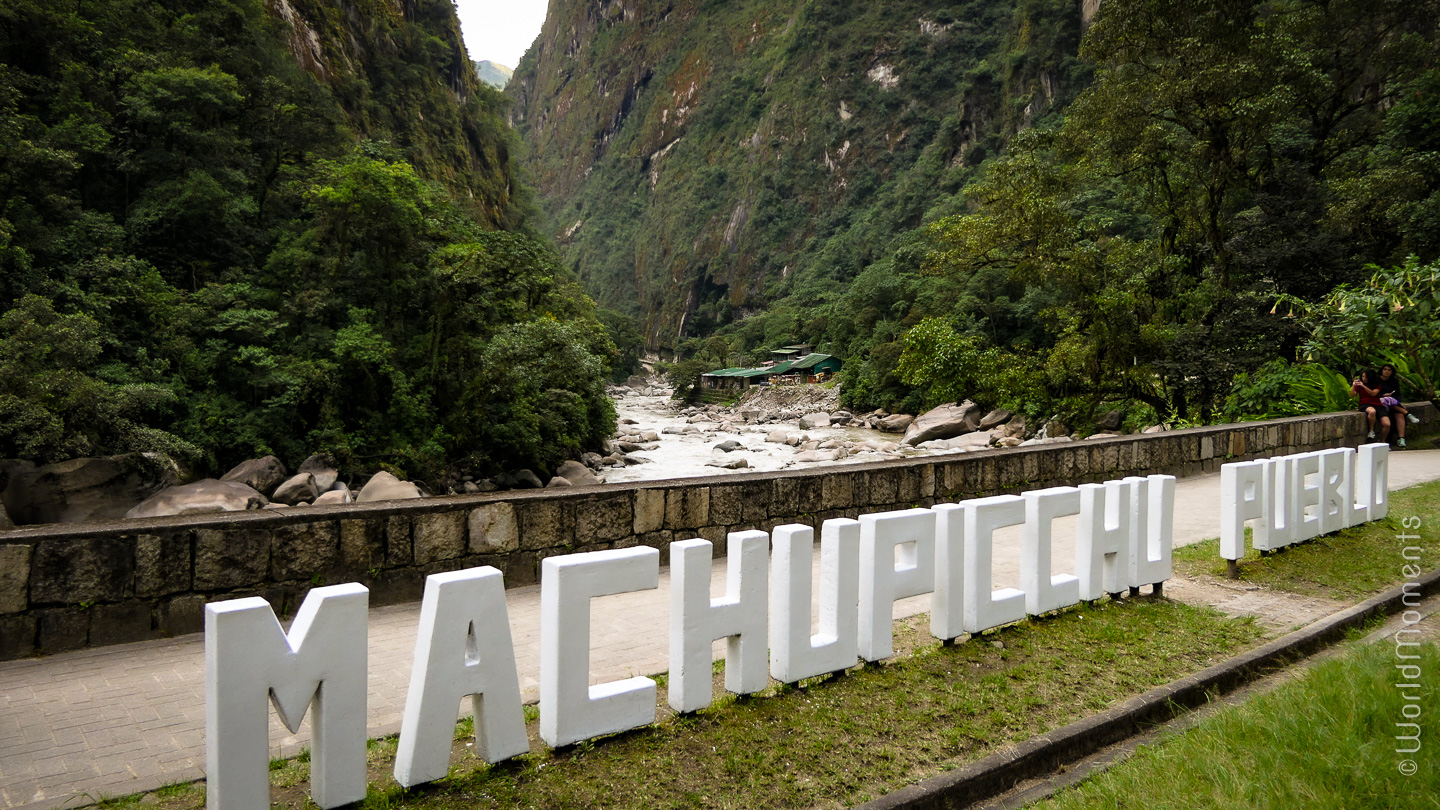
Aguas Calientes: Village of Machu Picchu (the closest to the ruins) offers belowground sulfur hotsprings
Check on this official website for entry prices and availability. The general price is for international travelers while the promotional price is for Peruvians and anyone else who belongs to the Andina community (Colombians, Ecuadorians and Bolivians).
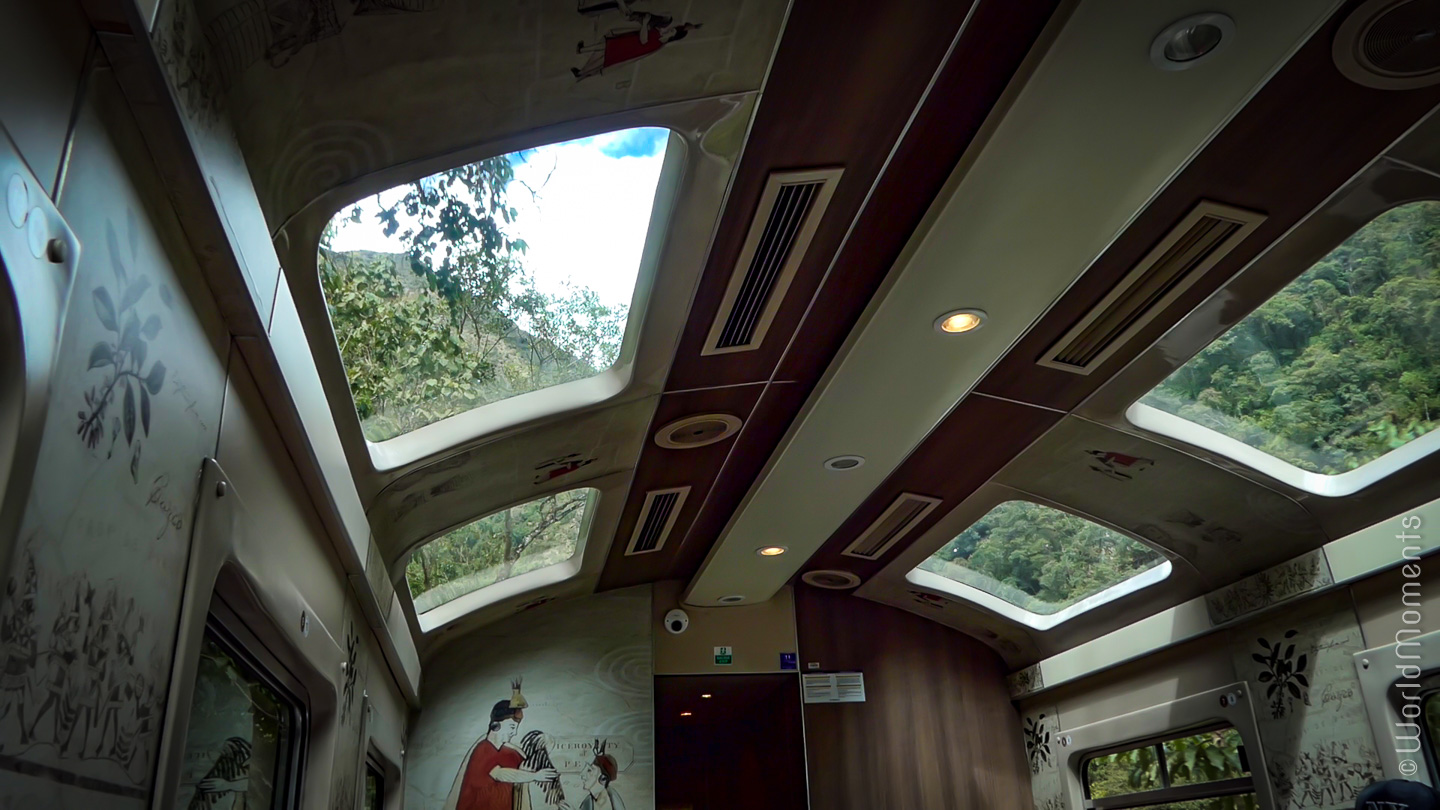
Taking the train is the fastest and most comfortable way to get to Machu Picchu, but it’s also the most expensive.
Bus to Machu Picchu from Cusco
This option will require a little more walking since there isn’t a direct bus. You can take a bus or a minivan to the Hydroelectric dam, which takes about five and a half hours and costs approximately 15- 30 USD (there are other options with stop-offs in Santa María and Santa Teresa, but they cost almost the same, though in Santa Teresa you can bathe in the thermal springs of Cocalmayo). The direct bus can be taken with different tourist agencies in Cusco or through this link Machu Picchu Bus Packers. Keep in mind that this trip could be somewhat dangerous because of weather conditions of the highway.
Once you get to Hidroelectrica, you will have to walk about 3 hours to Aguas Calientes. This option is preferred by many travelers because the path is flat, as it traces the route of the train tracks. This route also offers a splendid view of the Vilcanota river surrounded by majestic massifs.
When you arrive in Aguas Calientes, it’s a good idea to take a rest so that you are prepared for the next day. To visit Machu Picchu, you can either take a bus or go on foot, as described earlier.
On Foot (Inca Trail, Salkantay Trek y other trails)
Caminos del Inca, or the Inka Trail
For this adventure, you will have to walk for 4 days and 3 nights. Starting at Kilometer 82, close to Ollantaytambo, you will begin this marvelous adventure that offers so much beauty that you will forget about how tired you are. After crossing a narrow bridge, traversing a Eucalyptus forest and making a stop in the ruins of Llactapata, you will need to camp the first night in Waillabamba. The second day is the most difficult of the trek: you must ascend to 4,200 meters by crossing the Warmiwañusqa Pass. On the third day, you need to descend to 3,800 meters as you journey towards the Runkuraqai Complexes, and you can camp in Wiñayhuayna. On the fourth day, you only need to walk 2 hours to get to Intipunku (“The Gate of the Sun”).
It is not permitted to do this trek without a guide and we recommend that you make a reservation in advance, since only 180 tourists are allowed per day. Also note that this trek is closed in February.
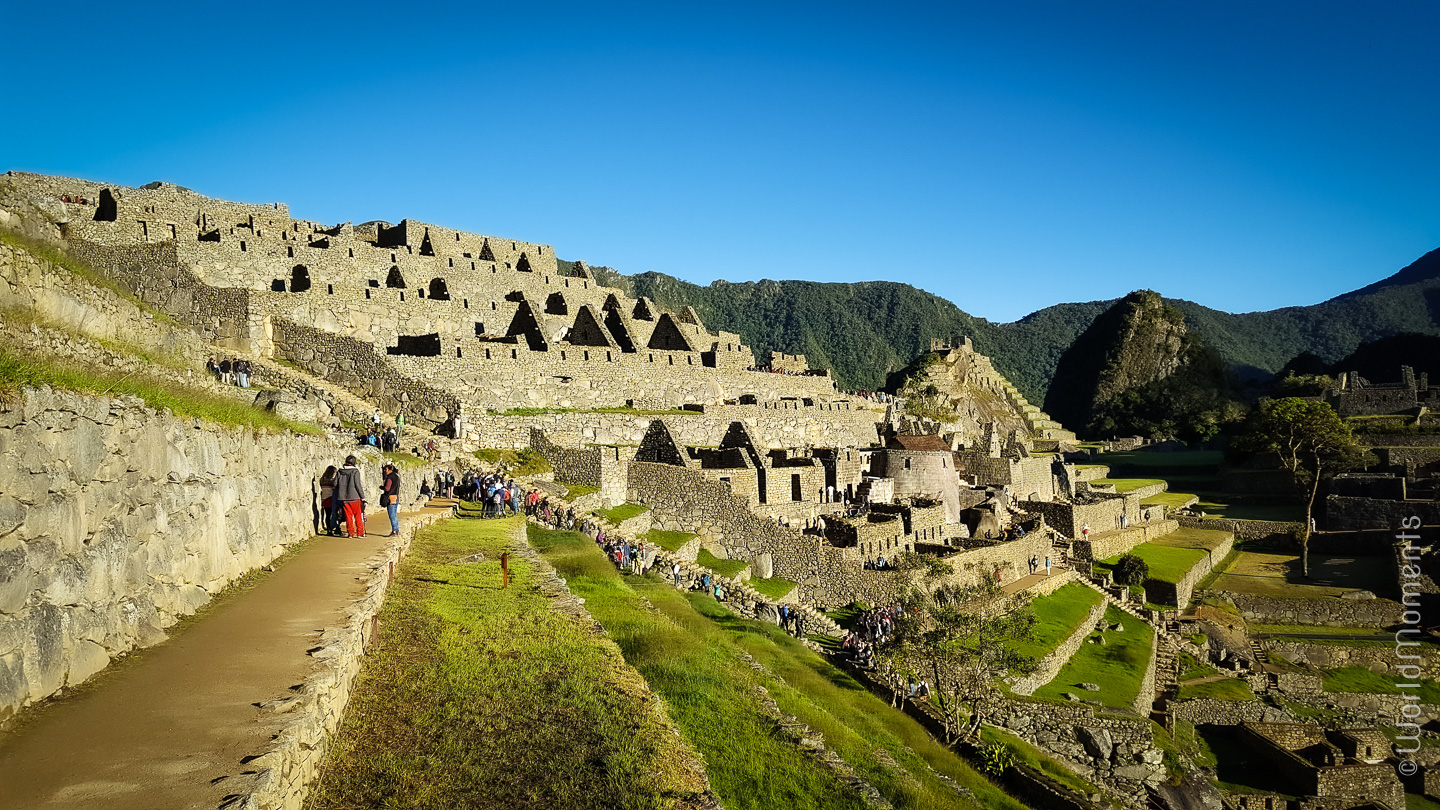
It is not permitted to do this trek without a guide and we recommend that you make a reservation in advance, since only 180 tourists are allowed per day.
Salkantay Trek
Salkantay is the second-largest snowy peak of Cusco, reaching a stunning 6,271 meters in height. This hike is longer than the previous one we described, requiring that you do 70 kilometers in 5 days. You start in the town of Mollepata, from where you will need to ascend on the first day for 7 hours to the Soraypampa encampment, passing by the supremely beautiful Huamantay Lagoon. The second day is even harder and demanding 22 kilometers in 10 hours, to Chaullay. On the third day, you will walk to Santa Teresa in 5 hours (you can take an incredible and relaxing bath in the hotsprings there). The fourth day requires that you walk another 6 hours to Aguas Calientes, taking the same route described earlier from La Hidroeléctrica, the one with the train tracks. This trip doesn’t require that you hire a guide, but it can be dangerous for older adults because of the altitude and strenuous physical activity required.
Lares Trek
This trek is not so well known and allows you to visit and experience Indigenous villages. This trip takes 3 days and requires 33 kilometers of hiking from Lares to Machu Picchu, passing by many local villages on the way. The beauty of the mountains and the friendliness of the local people will fascinate you. This is a more culture-focused route that is ideal for families. Even though all of the hikes in the Andes mountains are challenging, this hike is a little slower than the others, making it a favourite for the little ones.
On the first two days, you can enjoy hotsprings, visit the Kiswarani waterfalls, and sleep in a campsite. On the third day, you will visit the salt mines of Laras and take a train to Aguas Calientes to spend the night in a hotel. Finally, you can enjoy a visit to the ruins of Machu Picchu on the fourth day.
Huchuy Qosqo Trek
This trek is more comfortable than the harder ones described before, lasting two days and one night. The amount of walking required is 6 hours through the sacred valley, followed by a train trip to Aguas Calientes.
Inca Jungle Trek
The Inca Jungle Trek is yet another alternative to the Inca Trail that will bring you to Machu Picchu, and this trail is well known for the extreme and less extreme sports and activities that it offers, such as cycling, rafting, zip-lines, etc.
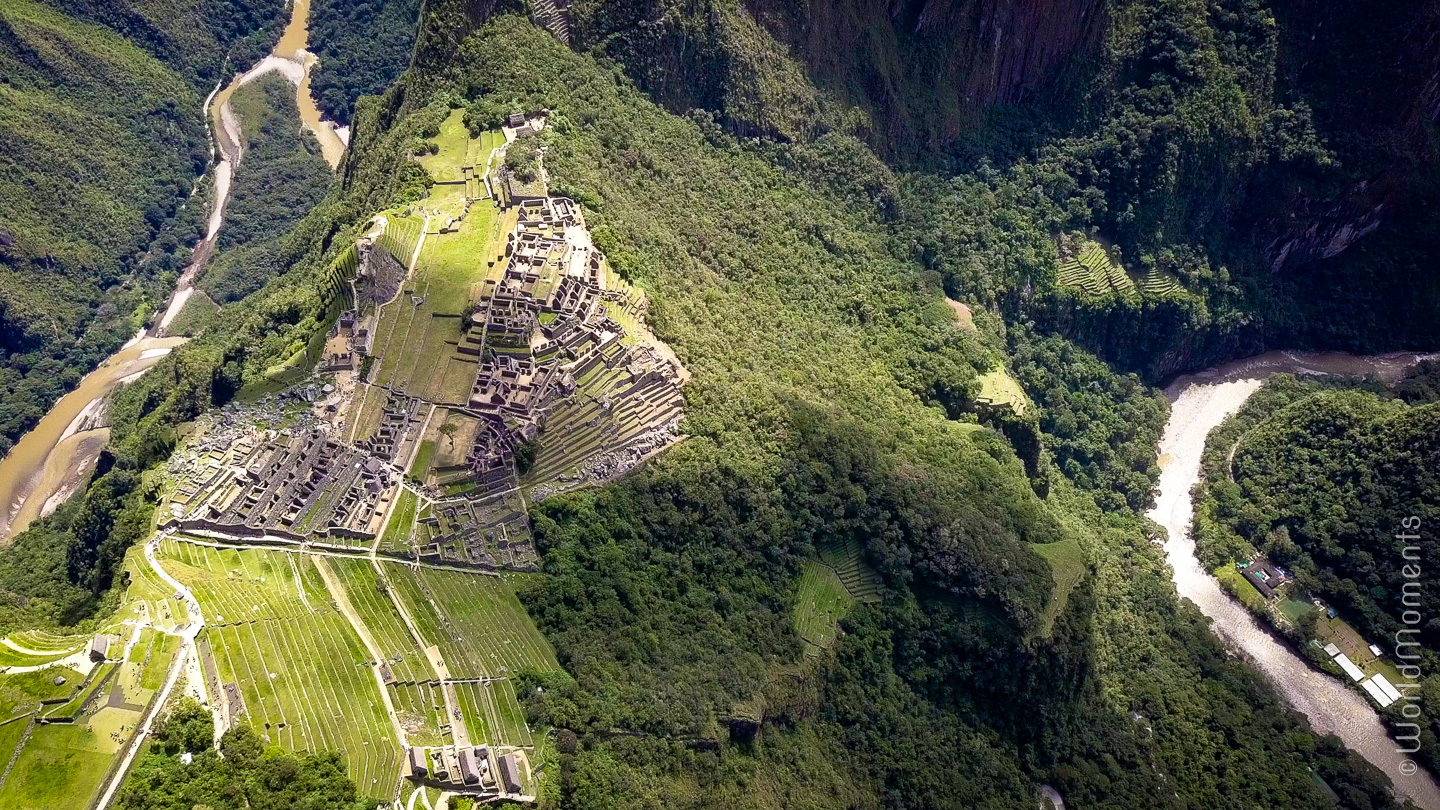
The Inca Jungle Trek is another alternative to the Inca Trail to get to Machu Picchu
Now that you know about all the options to get to Machu Picchu, are you inspired to choose one of them? Regardless of which option excites you more or better fits with your budget, you will not regret visiting this enigmatic and world-famous site.
You want to know more about Tourism in Peru, eh? If so, please follow the links below.






